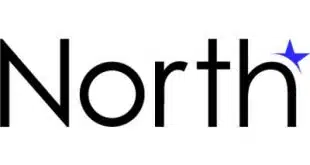Merchant information portals have been around for decades. They were initially designed as standalone applications that a merchant could use to track and retrieve information about customer credit card transactions, nightly batches and the source of an occasional chargeback. The information in the portal also served as a merchant’s detailed source for reconciling monthly transaction activity against their merchant statement.
Since the advent of the merchant portal, significant strides have been made in the areas of automated POS software and the integration of transaction data into popular business accounting applications. While the need for the standalone merchant portal has changed, it is still a valuable tool for merchants, especially those who manage multiple remote locations through a non-networked environment.
Over the years, many merchant portals have evolved into applications that provide users with even more capabilities. For example, merchant portals can provide access to a virtual terminal for keying in customer payments received by phone or mail. Other enhanced features might include deposit monitoring or supply fulfillment.
According to North American Bancard’s CIO Jim Parkinson, this was one of the motivations behind the rebuild of North American Bancard’s merchant portal. While their legacy application offered many features other portals did not, the NAB team saw the rebuild as an opportunity to bring in additional features that could not easily be accommodated through the old portal’s architecture. The team also felt a re-skin of the portal’s user interface was in order to give it familiar graphical and navigational features, making it easy to use. Their answer was a fully reconfigured merchant portal the company dubbed Payments Hub.
Perhaps the most striking feature of Payments Hub is its modern look and feel. The screens are graphically enhanced and very easy to interpret at a glance, mirroring common navigational and graphical interface features found in other well-known business portals. Merchants view transaction activity in dashboards and charts, and even have the ability to filter and change variables on the fly, such as dates and transaction types. The portal was also made fully responsive, meaning it is optimized for mobile viewing, making it easy for any merchant to check transaction detail, process a supply order, or accept a mail or telephone transaction conveniently from anywhere on a smartphone or tablet.
Payments Hub also has a full-featured reporting option, giving NAB merchants access to aggregated data reports. These reports can be categorized by unique transaction details, including but not limited to the specific card brand or payment type, as well as refunds and deposits. There is even a report that provides important tax-related detail.
Other features of Payments Hub include an easy virtual terminal interface that is free to all existing and new NAB-affiliated merchants, an employee profile wizard that makes adding, deleting or changing user access rights and credentials a breeze, an invoicing feature, a supply ordering interface, dispute management features for handling pre-arbitration and chargeback requests, a statement matching tool, and much more. NAB is committed to providing access to even more capabilities through Payments Hub, delivering a comprehensive solution to help merchants manage and grow their businesses.
Give your merchants the latest and greatest
If you’re interested in learning more about Payments Hub, or if you would like to offer your merchants the latest merchant and payment technologies through NAB, visit www.gonab.com or call 877-225-9293.





